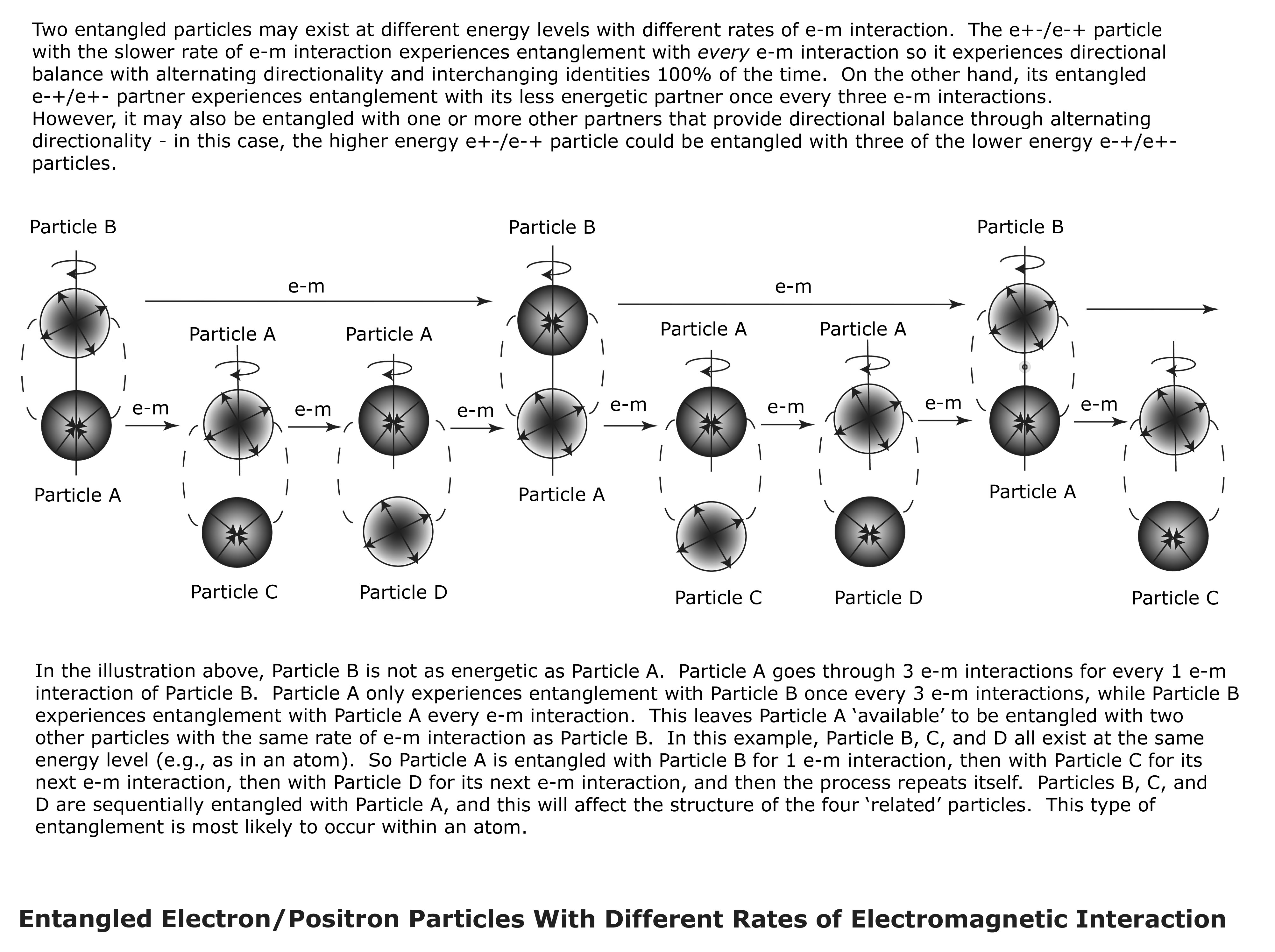 Two entangled particles may exist at different energy levels with different rates of e-m interaction. This represents a weak entanglement because the e+-/e-+ particle with the faster rate of e-m interaction will only experience a partial entanglement with its partner. However, the e-+/e+- particle with the slower rate of e-m interaction will experience entanglement with its faster partner with every e-m interaction.
Two entangled particles may exist at different energy levels with different rates of e-m interaction. This represents a weak entanglement because the e+-/e-+ particle with the faster rate of e-m interaction will only experience a partial entanglement with its partner. However, the e-+/e+- particle with the slower rate of e-m interaction will experience entanglement with its faster partner with every e-m interaction.
For example, if particle A consists of 3 e-m interactions to every 1 e-m interaction of particle B, then particle A will experience entanglement with particle B one time out of 3 e-m interactions, or 33% of the time. Particle B, on the other hand, will experience entanglement with particle A with every e-m interaction, or 100% of the time.
This represents a less stable relationship than “identical” entangled partners that consist of the same rate of e-m interaction, and possess alternating e-m directionality and interchanging identities with every e-m interaction, or 100% of the time.
Within an atom, multiple particles are often entangled. In the illustration below, the top portion shows what a ‘partial’ entanglement between a higher energy particle (A) would look like if it was only entangled with one lower energy particle (B). However, this entanglement would leave the higher energy Particle A available to be entangled with two more particles that have the same energy level as Particle B. In the lower part of this illustration, Particle A is also entangled with Particle C and Particle D that both possess the same rate of e-m interaction as Particle B.
